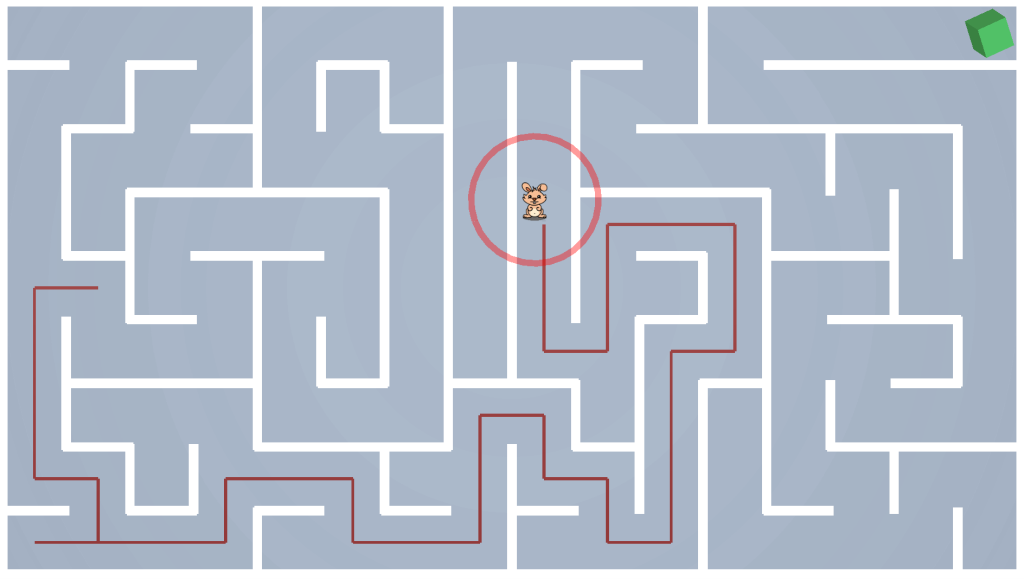The goal is to solve perfect labyrinths1 of variable difficulties, generated procedurally. The player has several options to help him in case of trouble.
The objective is to compare the brain capacities of healthy patients versus patients with neurodegenerative pathologies. For this, each patient is evaluated fairly and is free to move at his own pace on his own local account.
Details
Type : Serious Game, Labyrinth, Medical
Duration : 4 months (Feb-Jun 2017)
Collaborators : 2 Teacher-researchers
Research topic : Assessment and cognitive maintenance of patients with neurodegenerative diseases
Academic study of 98 projects (from 1 to 4 people) awarded first prize in Development – among Development, Industrial and Research.
Features
- Procedural generation of labyrinths
- Labyrinth resolution
- Collection of patient data
- Ergonomy adapted to the patient disease
- Local accounts
Constraints
- Be in collaboration with a professional and work on a research project
- Weekly report to the professional
Additional Notes
- This project led me to face various challenges (besides those associated with programming) because of its serious nature. Several interesting challenges among :
- Identification of the “client” needs
- Management of the multiple decision changes of the client during the project
- Focus on ergonomy
- Work on sustainability and relevance of the study (ex. replayability or equity between different patients)
- One point of frustration about this project is the lack of feedback from the researchers. Despite the requests for explanations concerning the study or the exploitation of the data, I stay in the unclear.
Links
Android : aMazing.apk
Note: The game is designed for tablets and desktops. It is fully functional on smartphones, but difficult labyrinths will require more precision.
1. A LABYRINTH IS PERFECT IF AND ONLY IF EACH CELL IS CONNECTED TO OTHERS BY ONE SINGLE PATH.

